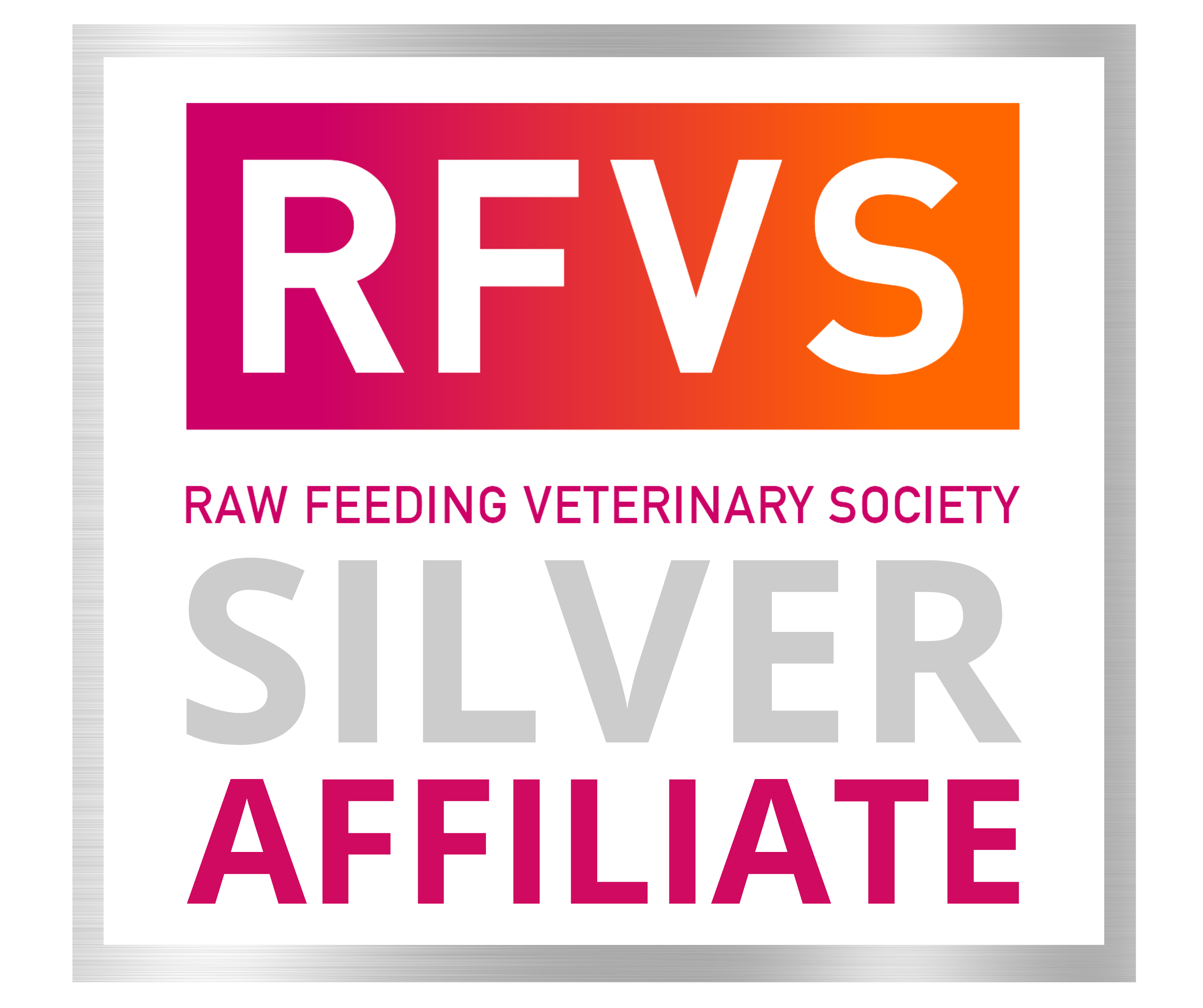From Gut to Gums: The Link Between Raw Feeding and Oral Health
Why Is Dental Health So Important for Dogs and Cats?
Dental disease is one of the most common conditions seen in veterinary practice. Studies show that by the age of three, most dogs and cats display some level of dental disease. This isn’t just about bad breath—plaque and tartar can lead to pain, infection, and tooth loss.
Left untreated, oral bacteria can enter the bloodstream and damage vital organs such as the heart, kidneys, and liver. Poor dental health also disrupts the oral microbiome, which is closely linked to gut health—the foundation of your pet’s overall wellbeing.
How Does Raw Feeding Support Dental Health?
Raw feeding offers a natural, cost-effective way to keep your pet’s teeth clean. When cats and dogs chew through raw meaty bones, they:
-
Scrape away plaque and tartar – the action of tearing and crunching mimics tooth brushing
-
Stimulate gums and jaw muscles, promoting oral blood flow
-
Satisfy natural instincts, reducing boredom and stress
-
Support gut health, which influences the oral microbiome and immune system
Veterinary dentists often describe raw meaty bones as “nature’s toothbrush.” Unlike processed kibble, which crumbles rather than cleans, raw meaty bones provide true mechanical cleaning.
Maintaining Oral pH and Microbiome Through Raw Feeding
A raw diet also supports dental health at the microbial level. Unlike kibble, which is high in starches and carbohydrates that quickly break down into sugars and feed plaque-forming bacteria, raw feeding avoids these unnecessary fillers. This limits plaque accumulation and helps maintain a healthier oral microbiome. Research shows that diets low in carbohydrates support a more balanced oral pH, which reduces tartar buildup and bacterial overgrowth (Marshall et al., 2014, Australian Veterinary Journal).
Further studies have highlighted that periodontal disease is strongly associated with dietary composition, and that carbohydrate-heavy, processed foods can predispose pets to oral dysbiosis and inflammation (Harvey et al., 1996, Journal of Veterinary Dentistry). By feeding species-appropriate raw diets rich in meat, bone, and natural enzymes, we help maintain the optimal conditions for oral health—supporting clean teeth, balanced microbiota, and a stronger foundation for overall wellbeing.
What Is Species-Appropriate Dental Care?
Feeding in line with biology is not just about nutrition—it’s about oral health too. Research on captive cheetahs found that those fed carcass-based diets showed:
-
Cleaner teeth
-
Stronger oral health
-
Improved feeding behaviours
By contrast, animals fed processed diets developed tooth decay, dental pathologies, muscle atrophy, and overall poorer health.
Zoo veterinary dental consultant Dr. Fagan (1980, American Association of Zoo Veterinarians) highlighted the importance of the “hassle factor”—the physical effort of chewing, ripping, and tearing food. He concluded:
“Animals need more ‘hassle factor’ per mouthful of nutrients. The best kept secret of the last fifty years is that we must eliminate the pre-processed, the overcooked, the smashed, the blended and the pureed foods and feed our animals a more appropriate diet, duplicating the feeding habits of feral conditions.”
This principle applies just as strongly to domestic cats and dogs.
Choosing the Right Bones and Chews for Your Pet
Not all bones are suitable for every pet. To minimise risks while maximising dental benefits:
-
Best choices: raw meaty bones with plenty of muscle and sinew (e.g., poultry frames, necks, wings)
-
Avoid: hard load-bearing bones (beef femurs, venison shanks) which can fracture teeth
-
For sensitive chewers: offer meaty chunks, fillets, or natural chewy treats instead
-
Rule of thumb: size, breed, age, and chewing style matter—always match the bone to the pet
Durable chews (like cattle hooves, deer antlers or goat horns) can also support mental and dental health, but they may increase the risk of broken teeth, especially in young, old, or greedy eaters.
For tailored advice, see our Raw Essentials Bone Feeding Guide or speak with one of our raw feeding specialists.
What If My Pet Can’t Chew Bones?
Some pets—because of age, dental fragility, or medical issues—cannot safely chew raw bones. Alternatives include:
-
Tooth brushing: daily brushing with a pet-safe toothbrush (never use human toothpaste). For extra appeal, try dipping the brush in bone broth.
-
Supplements: the kelp species Ascophyllum nodosum has been shown in multiple studies to reduce plaque build-up and soften tartar. It also provides a nutritional boost for digestion and immunity.
-
Vet guidance: despite best efforts, some pets have genetic or anatomical predispositions to dental disease. Regular veterinary checks are essential.
Key Takeaways for Pet Dental Health
-
Most pets develop dental disease by age three
-
Dental bacteria can harm the heart, kidneys, and gut
-
Raw meaty bones act as nature’s toothbrush for cats and dogs
-
Chewing provides both mental and physical health benefits
-
Bones must be carefully selected to avoid risks
-
For pets who can’t chew bones, brushing and supplements are effective alternatives
Final Word
Dental health is about more than clean teeth—it’s about your pet’s longevity and quality of life. Raw feeding provides a species-appropriate, natural solution that keeps gums healthy, teeth clean, and bodies strong.
At Raw Essentials, our team of raw feeding specialists can help you select the safest bones, meaty chunks, or natural chews for your cat or dog. Together, we can keep your pet’s mouth—and whole body—in excellent health.
References
Fagan, M. (1980). Zoo carnivore feeding and dental health: The “hassle factor” in captive animals. Proceedings of the American Association of Zoo Veterinarians.
Harvey, C. E., Shofer, F. S., & Laster, L. (1996). Association of age and body weight with periodontal disease in North American dogs. Journal of Veterinary Dentistry, 13(2), 57–62. https://doi.org/10.1177/089875649601300201
Marshall, M. D., Wallis, C., Milella, L., Colyer, A., Tweedie, A. D., Harris, S., et al. (2014). A longitudinal assessment of periodontal disease in 52 miniature schnauzers. Australian Veterinary Journal, 92(12), 450–456. https://doi.org/10.1111/avj.12244

